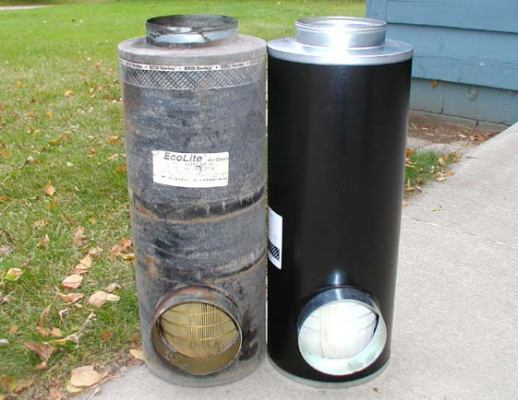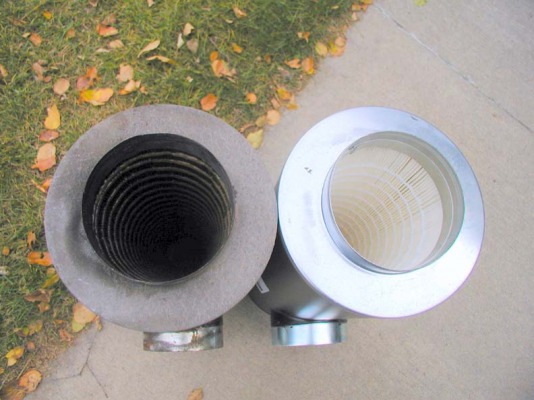afchap
Well-known member
This may cause some interesting discussion ?it has on another forum where I was taken to task for having never changed the air filter on my 8.3L Cummins?
My ?03 rig has an Apr ?02 mfg date. The original tires had Feb ?02 dates so I presume the Cummins engine also is an ?02 model. So, the air filter on my engine was going on 8 yrs and 60k miles. The filter gauge read about mid level. My owner manual refers to the gauge and says simply "replace the filter when necessary." Several service places over the years, including a Cummins location just a month ago, have always told me "don't mess with it as long as the gauge reads good." Several owners on another list shared warnings they have received from Cummins techs at rallies that the filter element could deteriorate after 3-4 years, and then come apart and trash the turbo/engine/etc. Since I had time to order a new filter and get it here and installed before we depart the area, and could spare the $$, I decided to go ahead and replace the (some would say) "perfectly good"/(others would say) "over due and very risky" filter on my engine and report back on the condition of the original filter I replaced.
I found the filter listing at most places online at anywhere from $95 to $120. I ordered the filter online from Spartan chassis for $75 plus $15 shipping. I replaced the filter late this afternoon. The old filter was dirty on the inlet side, but not terribly so. It looked pretty much like new on the outlet side. Even after rubbing and pulling on the paper element with my fingers, I found no evidence of any kind of deterioration. In thinking about what MIGHT cause deterioration to the "water resistant" filter element, the only thing I could think of is a lot of excessive humidity ...perhaps that plus a lot of sitting around rather than being used might be the combination. If/when someone sees an air filter that has deteriorated and started coming apart, I would be interested in how old it is, and how much the vehicle has been used in that time period.
If interested, you can see more of my thoughts, and pictures, on my webpage at http://www.pjrider.com/Cummins.htm
My ?03 rig has an Apr ?02 mfg date. The original tires had Feb ?02 dates so I presume the Cummins engine also is an ?02 model. So, the air filter on my engine was going on 8 yrs and 60k miles. The filter gauge read about mid level. My owner manual refers to the gauge and says simply "replace the filter when necessary." Several service places over the years, including a Cummins location just a month ago, have always told me "don't mess with it as long as the gauge reads good." Several owners on another list shared warnings they have received from Cummins techs at rallies that the filter element could deteriorate after 3-4 years, and then come apart and trash the turbo/engine/etc. Since I had time to order a new filter and get it here and installed before we depart the area, and could spare the $$, I decided to go ahead and replace the (some would say) "perfectly good"/(others would say) "over due and very risky" filter on my engine and report back on the condition of the original filter I replaced.
I found the filter listing at most places online at anywhere from $95 to $120. I ordered the filter online from Spartan chassis for $75 plus $15 shipping. I replaced the filter late this afternoon. The old filter was dirty on the inlet side, but not terribly so. It looked pretty much like new on the outlet side. Even after rubbing and pulling on the paper element with my fingers, I found no evidence of any kind of deterioration. In thinking about what MIGHT cause deterioration to the "water resistant" filter element, the only thing I could think of is a lot of excessive humidity ...perhaps that plus a lot of sitting around rather than being used might be the combination. If/when someone sees an air filter that has deteriorated and started coming apart, I would be interested in how old it is, and how much the vehicle has been used in that time period.
If interested, you can see more of my thoughts, and pictures, on my webpage at http://www.pjrider.com/Cummins.htm


